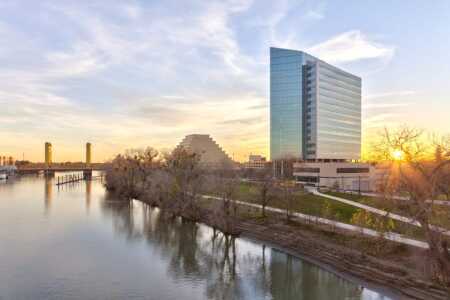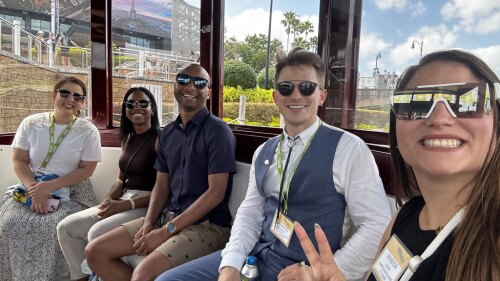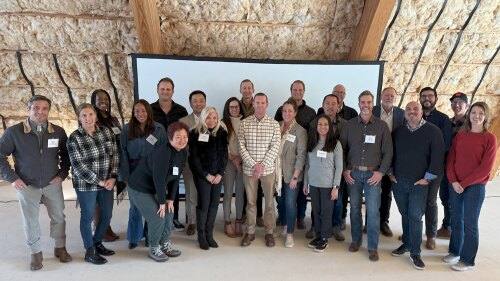The Sacramento River acts as a natural barrier between the cities of Sacramento and West Sacramento, but members of the local district council are exploring how to transform the waterfront so the river serves as a destination that connects rather than divides the metro area.
Though the two cities have a history of working together, jurisdictional silos have led to an uncoordinated approach to development and the lack of a unified vision for the Sacramento riverfront. The cities are also in two different counties—Sacramento in Sacramento County and West Sacramento in Yolo County—and ownership of riverfront parcels is distributed among a patchwork of public and private landowners. A comprehensive master plan for the riverfront was developed in 2003, but its implementation was stalled and it is likely now out of date.
Nearly $1 billion in infrastructure and public improvements have been made along the river by both Sacramento and West Sacramento in the past decade, yet the riverfront has yet to emerge as a distinctive place or as a true economic engine for the region.
ULI Sacramento has long been engaged with the issue of revitalizing the riverfront. In March, it held an intensive, two-day program on strategies for turning more than a decade of planning into action. The program began with an open forum for the public to gain an understanding of the history and current context of riverfront development, and concluded with a private, invitation-only workshop where public, private, and nonprofit stakeholders from both sides of the river could engage in candid conversations about next steps.
During both portions of the program, strategies for success and lessons learned were shared by representatives from four U.S. cities that have created coherent waterfront development programs—Chattanooga, Louisville, Pittsburgh, and Spokane.
A main recommendation from the workshop was to create a single, independent, nonprofit entity whose sole focus would be the Sacramento riverfront and balancing public benefits such as parks and bike/pedestrian infrastructure with private sector development opportunities. This entity would take on multiple roles and responsibilities, including fundraising from private donors, applying for state and federal grants, developing new infrastructure, maintaining and operating public facilities, and overseeing cultural programming.
“Part of the problem is that the two jurisdictions—Sacramento and West Sacramento—have approached the revitalization of the riverfront independently and with varying degrees of public sector leadership and private sector initiation,” said workshop cochair Allen Folks, member of the ULI Sacramento riverfront development committee and director of design and planning at Ascent Environmental. “The result has yielded some success, but falls short of what other cities have created in both region-serving public attractions, trail and promenade activity, and large gathering event spaces that ultimately attract private sector investment.
“Having a single entity would also result in a more consistent user experience of the riverfront along both sides and greater consensus-building among competing interests,” Folks added.
Indeed, several catalytic projects have been built on either side of the Sacramento River during the past decade. The Railyards development and the Golden 1 Center arena in downtown Sacramento, as well as the Barn, a music and entertainment venue in West Sacramento’s Bridge District, are considered major successes, but each has been pursued in an ad hoc fashion rather than as part of a coordinated strategy. In addition, stronger pedestrian connectivity is needed between the two downtowns, as well as better pedestrian access to the river on each side.
“Because there isn’t a common governance structure between the two cities, you get a lot of individual action that doesn’t have the muscularity needed to pursue long-term change,” said Richard Rich, Railyards project manager for Sacramento. “There are so many different stakeholders with so many different missions, it has been hard to get a coherent plan that everyone can get behind.”
“There has been a kind of fragmentation of leadership along the river,” he added. “As a result, the riverfront has been left behind as different neighborhoods along each side have been redeveloped.”
Not all stakeholders are convinced that creating a nonprofit governing entity is a necessary first step to realizing the riverfront’s potential. Martin Tuttle, city manager of West Sacramento, said the region has already been through a planning and visioning process for capitalizing on the riverfront through both the 2003 riverfront master plan and the Sacramento Region Blueprint, a regional land use and transportation plan published in 2005. “We need to acknowledge the work that has already been done and the work that is currently underway,” he said.
West Sacramento has moved on to the implementation phase, he said, and has several noteworthy projects—including the Bridge District, the Barn, and the C and I street pedestrian bridges—to show for it. “We’re making incredible progress,” Tuttle said. “You can spend a lot of time on vision and creating new governing structures, but we are sort of past that and have moved on to project delivery.”
Tuttle attributes West Sacramento’s approach to the fact that it is the nimbler, more innovative, and private sector–focused of the two cities. He is also critical of the idea of creating nonprofit without a dedicated funding source or benefactor to provide seed money. “Without that backing, the call for a nonprofit seems a little hollow,” he said.
Yet, certain cities have clearly benefited from placing the leadership of riverfront development in the hands of an independent nonprofit organization.
Chattanooga’s River City Company, a private, nonprofit organization, is considered a model entity because of what it has accomplished since being established in 1986 with $12 million in seed money from local foundations and financial institutions. Hugging the banks of the Tennessee River, downtown Chattanooga has attracted $5 billion in private investment since River City was established, $1 billion of that just in the past year, said Kim White, organization president and chief executive officer. She spoke about River City’s accomplishments and strategy at the ULI Sacramento workshop.
“The fact that we have been able to outlast political cycles is really important,” White said. “We act as an independent group that can work with any number of stakeholders—the city, the county, foundations, and private companies. The fact that we provide an independent table that others can gather around has worked to the city’s benefit.”
Sacramento and West Sacramento have a history of collaboration on regional solutions in the form of joint powers authorities (JPAs). Recently, a JPA was set up to oversee the implementation of a new streetcar that will serve both cities.
“In Sacramento, we have several precedents for a similar type of organization, and I think the idea of a precedent is compelling,” said workshop cochair Bernadette Austin, a member of the ULI Sacramento riverfront development committee and associate director of the Center for Regional Change at the University of California, Davis. An existing JPA between the two cities could take on the role of guiding riverfront development, Austin said.
“What ULI has tried to do is offer a solution that leverages the strengths and assets of both Sacramento and West Sacramento to unlock the full potential of the riverfront for the local and regional economy,” said Folks. “If the two cities joined hands in a collective and positive way, what we can achieve is truly limitless.”
Learn more about the ULI Sacramento Riverfront Development Program.
For more information on regional collaboration to support waterfront park and open space creation and activation, sign up for updates on the 10-Minute Walk Campaign or follow #10MinWalk. The 10-Minute Walk Campaign, a national movement led by the Urban Land Institute, The Trust for Public Land, and the National Recreation and Park Association, is promoting the bold idea that everyone living in urban America should live within a 10-minute walk of a park.








